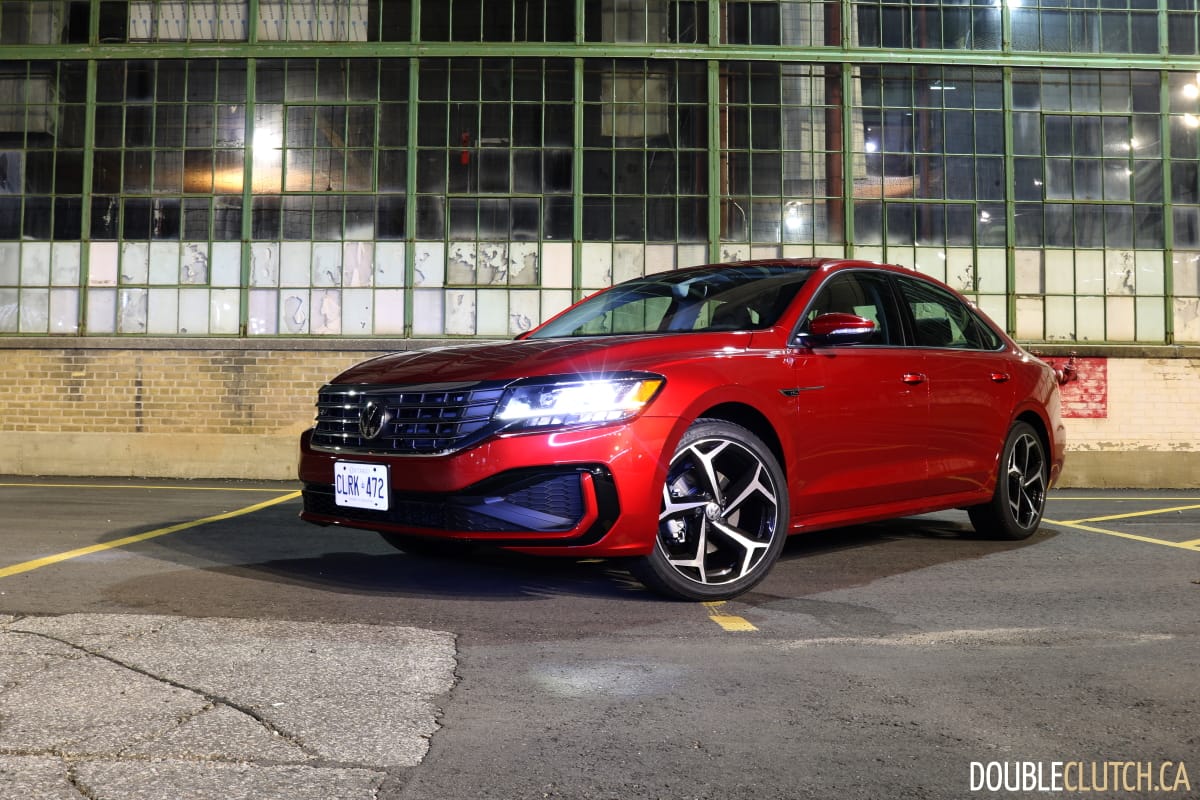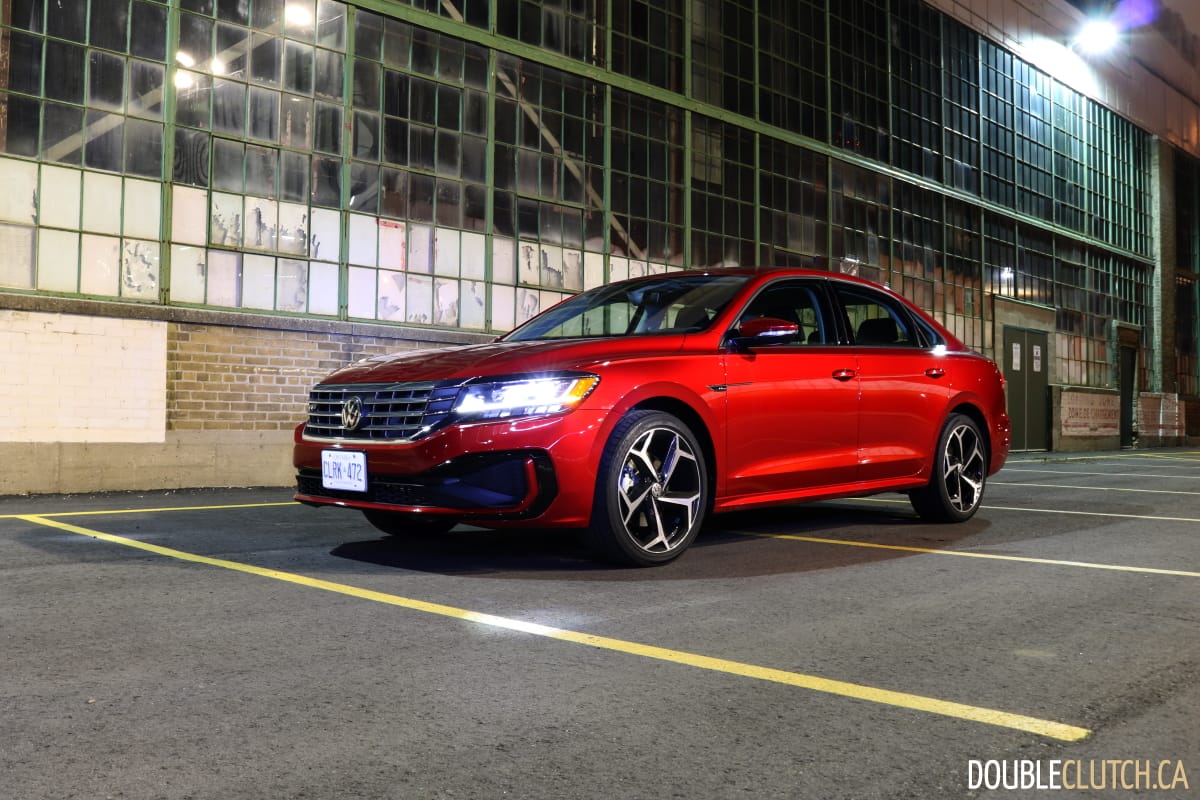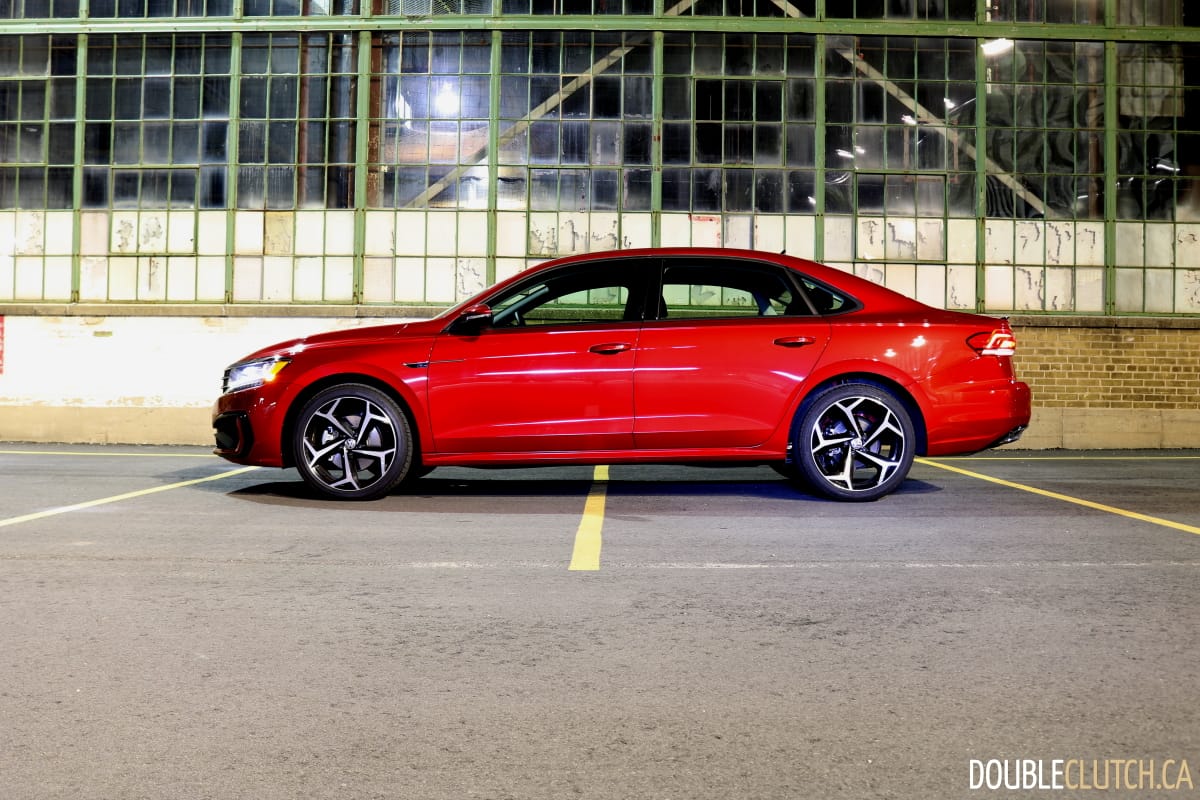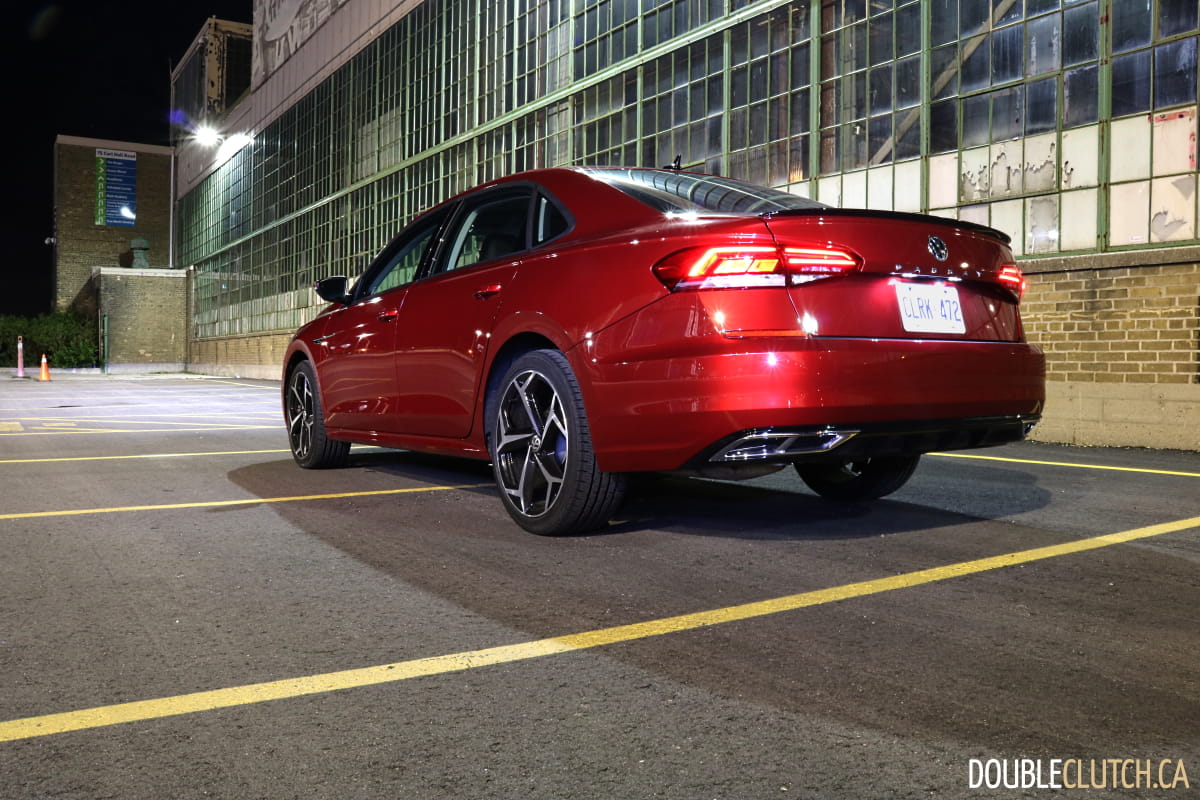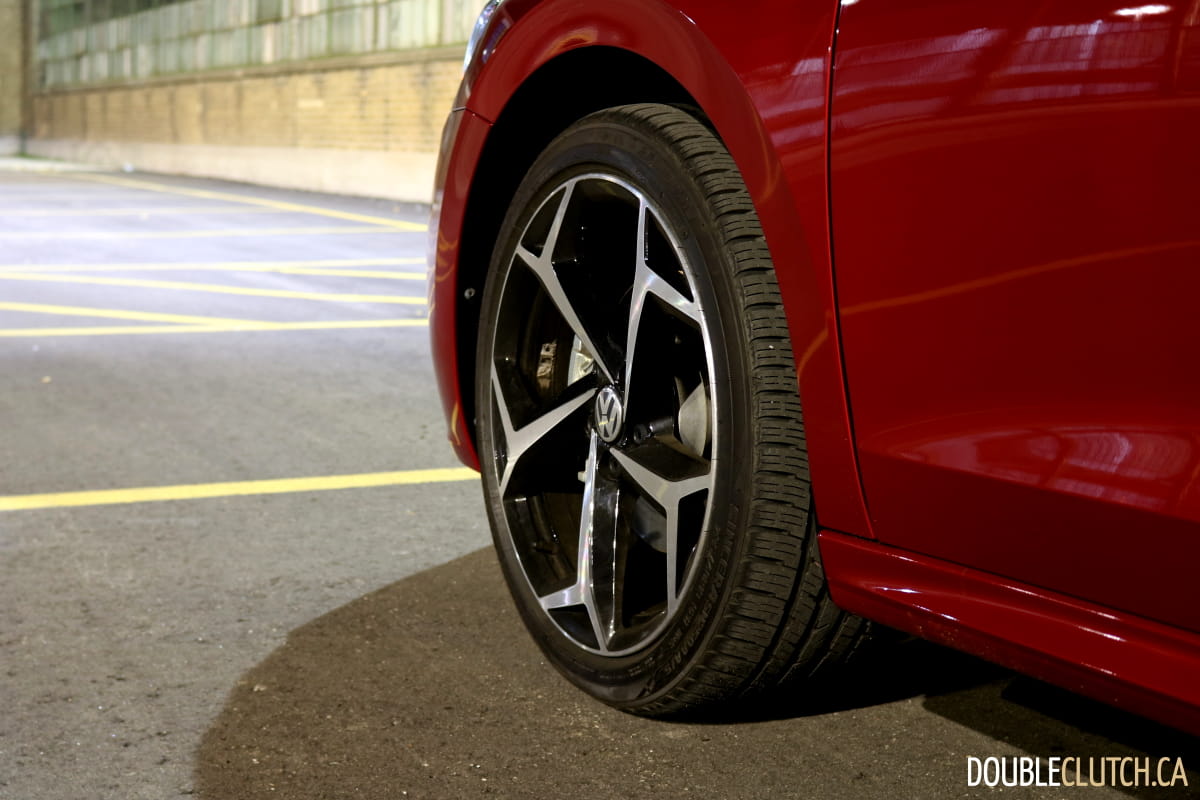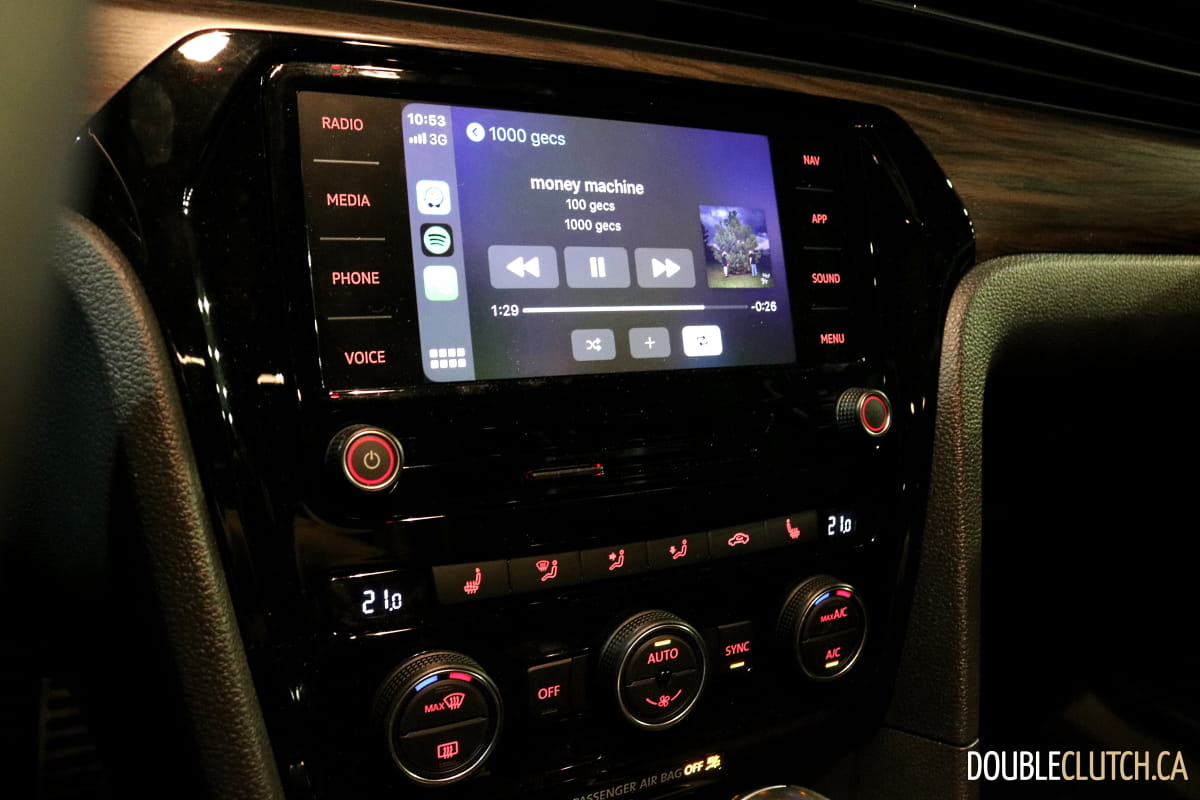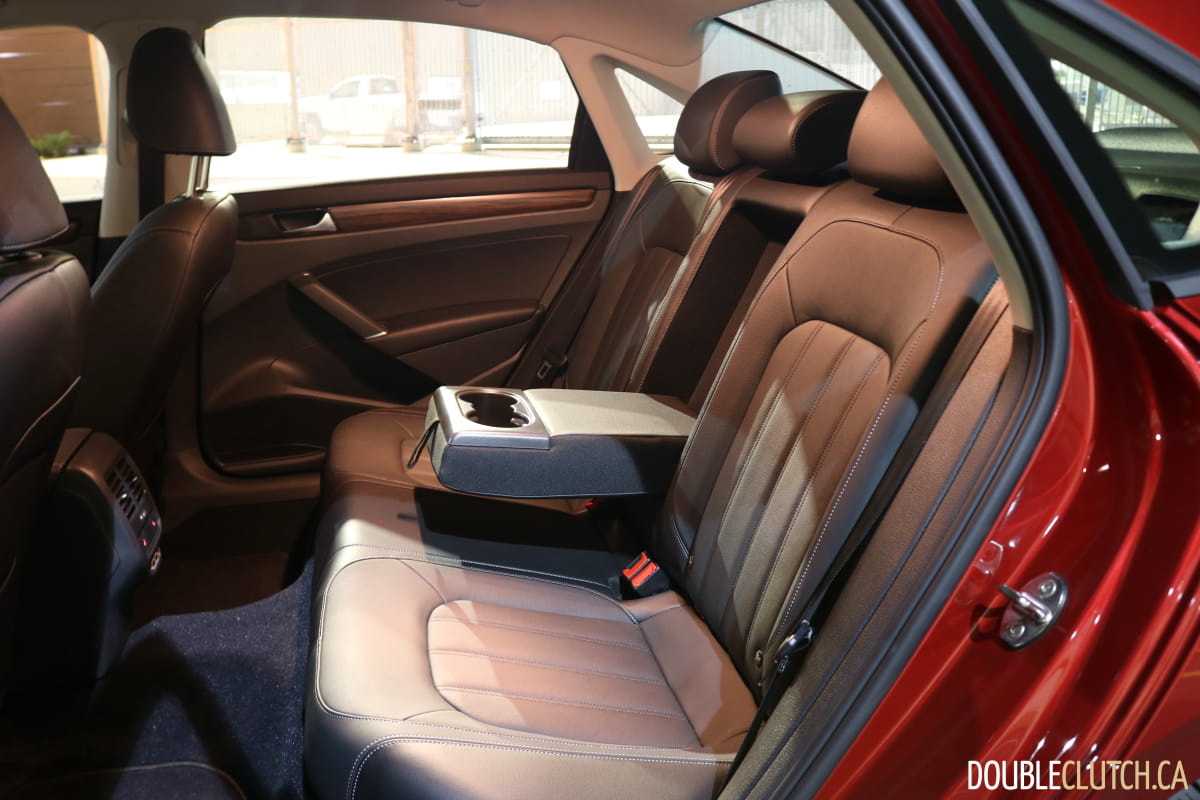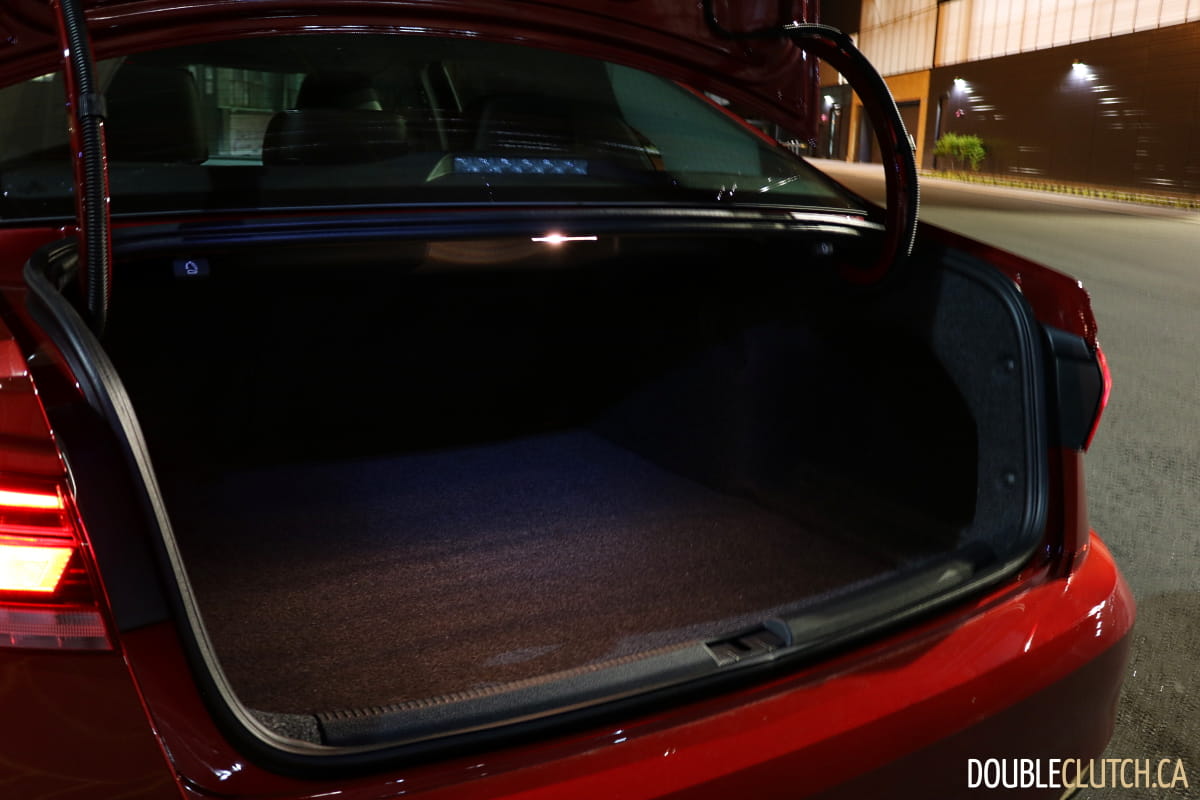It’s no secret that we are currently living in the sedanocalpyse. Ford and GM have already given up on the midsize sedan in favour of nondescript two-ton midsize crossovers while the stalwart, class-transcending Honda Accord (reviewed here) is currently being outsold by the average upper-middle-class PTA parent’s Starbucks drive-thru warrior of choice, the Lexus RX. Due to this sales environment only 523 Volkswagen Passats found homes on Canadian driveways in the first quarter of 2020 which begs the question, does it deserve better sales figures? Some may criticize the 2020 Volkswagen Passat R-Line for being a bit boring.
It doesn’t have the lurid Predator-inspired grille of a Camry, the swooping roofline of an Accord or the baroque detailing of a Sonata, but visual restraint has typically been a Passat hallmark. While not as brilliantly timeless as the B5.5 Passat of the early 2000s, this 2020 model has subtle design touches to marvel about all the same. The main character line going down each side is crisp beyond belief, undoubtedly a tricky contour to produce yet flawlessly executed on each car that rolls off the production line. Particular kudos go to the Aurora Red Chroma paint optioned on our test car, a fabulously dynamic three-stage colour that ranges from cherry syrup-deep to simply vivacious depending on lighting. Our R-Line tester gets a special exterior treatment that to many, may not be an improvement over the standard Passat’s lines.
Inside the 2020 Volkswagen Passat is a pleasant place to be. Let’s start with the full-width air vent that dominates the dashboard. It adds heaps of visual width and is simply a lovely detail, evocative of current high-dollar luxury machinery. The front seats are very good with plenty of thigh support, good bolstering, an above-average range of adjustment and plenty of well-placed lumbar support for the driver. The cushions are firm and supportive without being cheek-numbingly unyielding, a classic hallmark of Germanic machinery. Moreover, every single switch, button and knob is brilliantly weighted with loads of tactile feel. Volkswagen Group spends serious time on engineering their switchgear and it certainly shows when operating the Passat’s secondary controls.
Other lovely touches include a dashtop that’s soft-touch all the way to the windscreen, automatic power windows on all four doors, a cavernous storage bin to the left of the steering wheel with integrated coin holders and Volkswagen’s trademark power sunroof dial that eliminates awkward button holding when attempting to open the sunroof. While there’s certainly lots to love, it’s hard to ignore the overwhelming presence of hard plastics on mid-level surfaces and the obnoxious use of glossy black plastic that’s bound to attract fingerprints like Tony from Skins. Although said plastic allows the climate control display to integrate seamlessly with the dash fascia panel, it has drawbacks given it’s a major touch surface. An interesting material choice that doesn’t leave clean car aficionados pulling their hair out is goncalo alves wood trim that for some reason looks like it’s cut from the finest genuine fake trees. Buick LeSabre fans will be stoked.
In terms of connectivity, the 2020 Passat comes standard with Apple CarPlay and Android Auto on a 6.33-inch infotainment screen. While a bit small, the screen’s black levels and clarity are fantastic and the submenu structure is easy to navigate. Sitting between the speedometer and tachometer is a multi-function information display with a few neat touches of its own. The controls include lovely metal buttons and the screen can display two different average fuel economy stats for trip and overall mileage respectively as well as oil temperature, handy to have on turbocharged cars in summer. Our R-Line came equipped with an eight-speaker Fender audio system with good clarity and fair staging. The only minor gripe with the system is the lack of separate adjustability of the subwoofer for drivers who enjoy a warmer sound signature.
Rear seat legroom is properly generous, with approximately six yards between the fore and aft edges of each rear footwell. Long-wheelbase S-Class owners, aren’t feeling so clever now are we? That being said, rear headroom is tight for passengers in the six-footer club. While back there, occupants can charge their devices with two USB-A charging points and hold up to four full-size drinks, one in each door and two in the centre armrest with a smaller cutout in the armrest to accept a Red Bull. And don’t think for a moment that all this space comes at the expense of cargo space as beneath the trunk lid there’s enough square-footage to hold an entire stop of Warped Tour. That may be slightly hyperbolic, but most apartment-sized flat-screen TVs would fit in there with the rear seats up.
Powering the 2020 Volkswagen Passat is a 2.0-liter turbocharged four-cylinder engine making 174 horsepower and a stout 206 lb-ft. of torque. Hitched to a six-speed automatic transmission, VW’s EA888 engine displays a pleasant amount of character for a mainstream motor. Roll onto the throttle and the lovely mechanical sound of the turbocharger spooling up is notably audible to the driver and passengers. For aging Mark IV kids who still feel the VWVortex “1.8T never lose” meme in their soul, it’s a brief childish escape from the daily grind of meetings that could really just be emails. The 2.0T and six-speed automatic combo is a smooth, creamy powertrain with velvet glove around-town manners and excellent highway response. Squeeze the throttle while cruising and a smooth wave of torque surges the Passat past any numpty who decides to merge onto the 401 at 70 km/h.
It’s reasonably efficient too, averaging 8.6L/100km in mixed driving over our week of testing. The steering, while helium-light and novocaine-numb at city speeds, weights up a bit on the highway leading to a trademark feeling of teutonic solidity. Body control is also quite good with most minor road impacts being heard rather than felt, much like Coldplay’s discography. In fact the only real dynamic sin of the Passat comes from the Falken Sincera tires which are quite rubbish. They emit a loud roar over smooth pavement and over rough pavement it sounds like the Passat is auditioning for a stage production of Riverdance. They also offer poor grip compared to leading tires, evidenced by the low threshold necessary to activate ABS. Spending a couple of dollars more than lowest-bidder tires would pay dividends in noise-reduction and handling.
As our Passat tester was specced-up to the teeth, all manner of driving assists were on offer. The Passat’s adaptive cruise is smooth and lets drivers set a Toronto-spec following distance, the blind-spot monitoring system is quite astute without being hall-monitor intrusive and the federally-mandated backup camera is reasonably crisp, albeit lacking in adaptive guidelines. The lane-keep assist is also both subtle and effective with the whole suite working harmoniously and tirelessly yet without any sort of abruptness or uncouth behaviour. It’s a shame then, that only the top trim gets the full package. Another nice safety item only available on Execline models is the adaptive LED front lighting system. It’s crisp and clean, with tight beam cut-off and excellent luminous intensity.

The 2020 Volkswagen Passat R-Line wholeheartedly deserves better sales figures. Despite being a watered-down, Americanized vision of a German car it conducts its business with a sense of confidence and solidity that a crossover simply couldn’t replicate. While it doesn’t have the same hewn-from-granite feel or bauhaus gravitas of past world-market Passats, it’s a solid option for those looking for a traditional, conservatively-designed midsize sedan.






